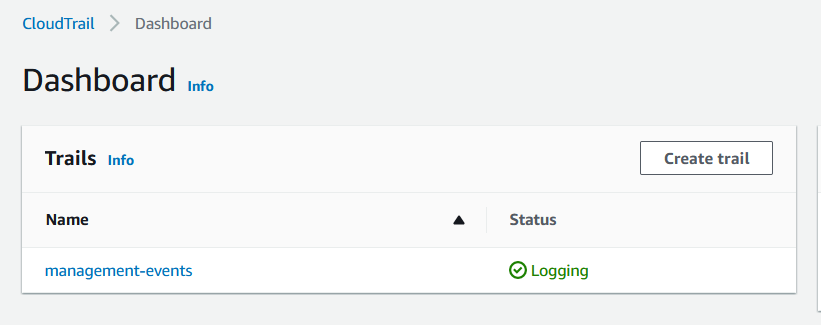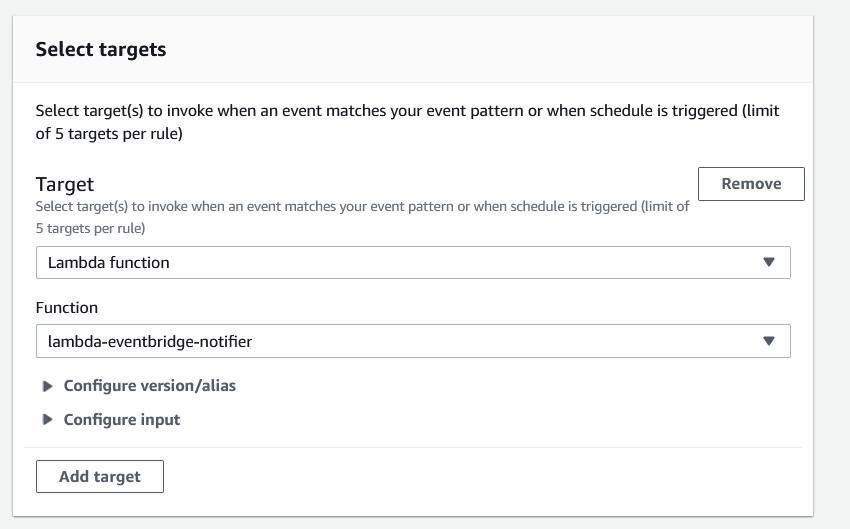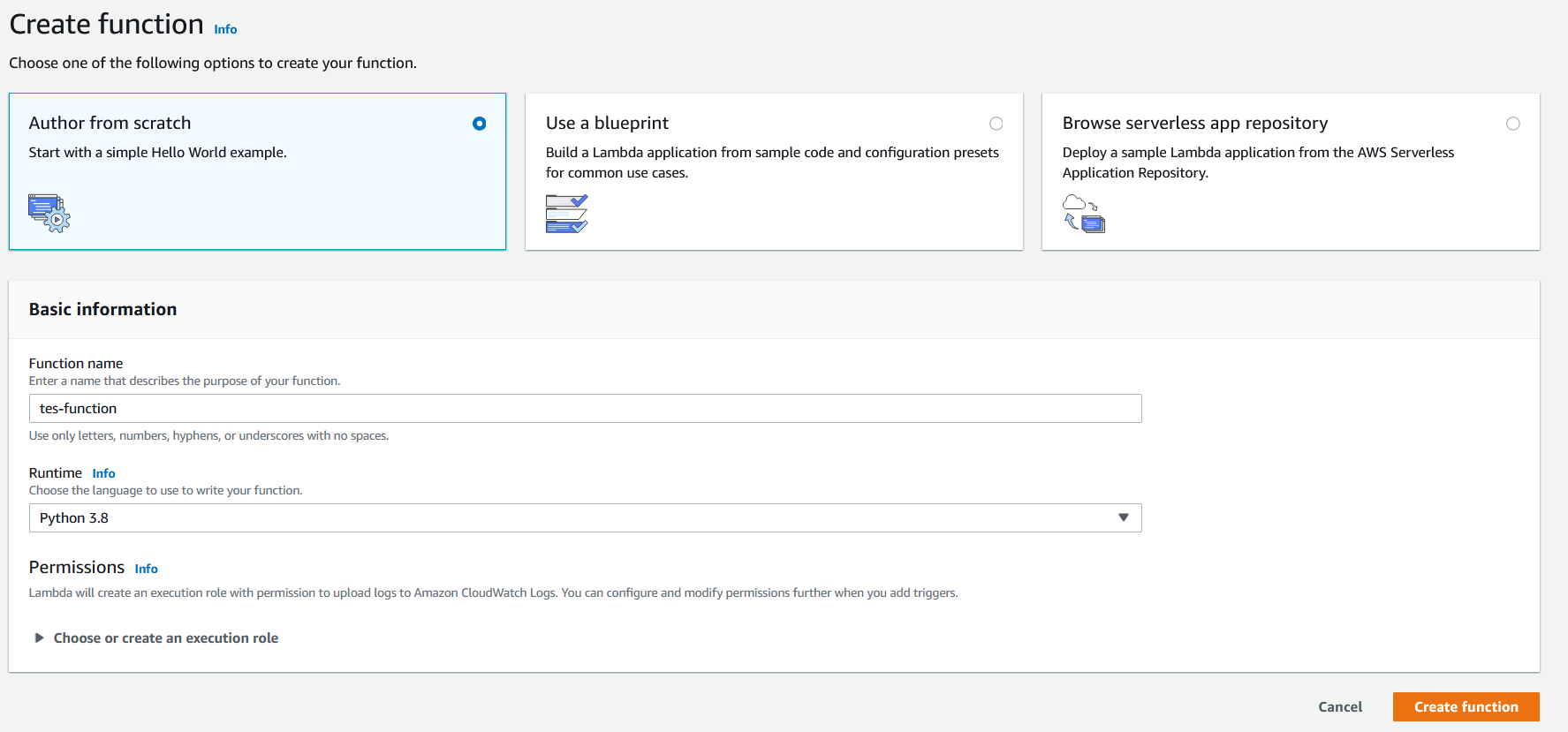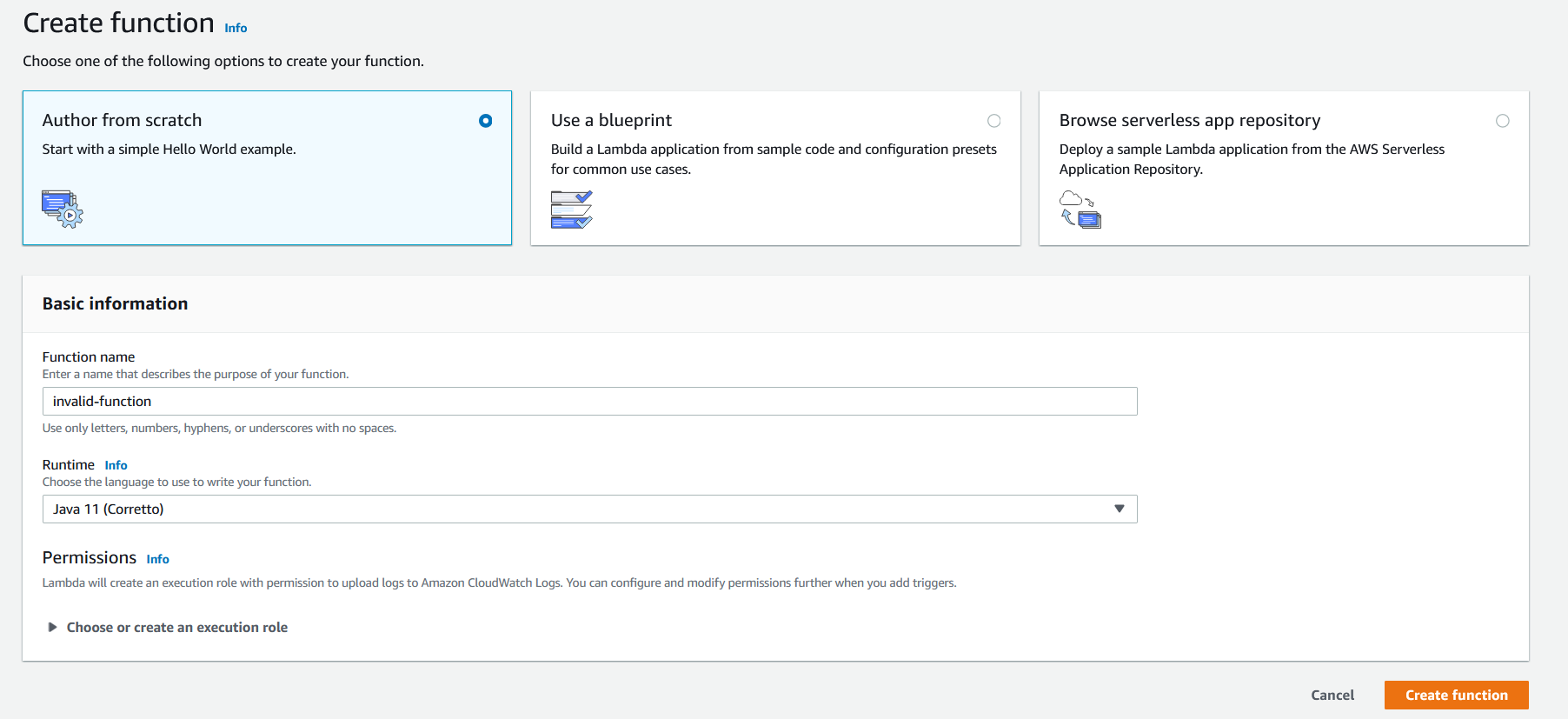Using EventBridge to unlock AWS event-driven architectures
Learn how to monitor AWS Events and write them to DynamoDB when a Lambda Function with the Python3.8 runtime is created.
Tell me more about AWS EventBridge
AWS EventBridge is a Serverless Event Bus that allows you to create decoupled applications that respond to real-time events. Using EventBridge you can ingest events from third-party sources such as Zendesk or create rules that forward matching AWS events to targets such as SNS or Lambda.
In this example we will create an EventBridge rule that is triggered when a Lambda function is created, but only when the Lambda's runtime is Python3.8. We will then store the event details in a DynamoDB table. Follow the next steps to get started.
Enable CloudTrail logging
AWS EventBridge won't function without an active trail so navigate to the CloudTrail console and make sure that logging is enabled.

Create a target Lambda Function
When an Event occurs that has a matching EventBridge rule the event is forwarded to one or more targets. A target can be many services including SQS Queues, SNS topics and Lambda Functions. In this example we will create a Lambda to process matched events.
First create a DynamoDB table named eventbridge-notifier with a Partition Key of id We will use those to store data about matched events.
Next create a NodeJS function with the following code. This will record in the DynamoDB table the event id, eventTime, eventSource, eventName, functionName, runtime and the event itself.
Make sure to add the correct permissions to the Function so that it can write to the DynamoDB table.
const AWS = require("aws-sdk");
AWS.config.update({ region: "eu-west-1" });
const docClient = new AWS.DynamoDB.DocumentClient({ apiVersion: "2012-08-10" });
exports.handler = async (event) => {
try {
const { id, detail } = event;
const { eventTime, eventSource, eventName, requestParameters } = detail;
const { functionName, runtime } = requestParameters;
const params = {
TableName: "eventbridge-notifier",
Item: {
id: id,
time: eventTime,
eventSource,
eventName,
functionName,
runtime,
event,
},
};
await docClient.put(params).promise();
return "success";
} catch (e) {
return {
statusCode: e.statusCode,
body: e.message,
};
}
};
Create an EventBridge Rule
The next step is to create an EventBridge rule for the event that we want to match. Visit the EventBridge console and click{" "} create rule. Here we have the option to choose from pre-defined patterns. As these are not provided for every service we will create our own rule. This will match a Lambda CreateFunction event but only when the Function's runtime is Python3.8

Copy the below JSON into the Event Pattern
{
"detail": {
"eventName": [
"CreateFunction20150331"
],
"requestParameters": {
"runtime": [
"python3.8"
]
}
},
"source": [
"aws.lambda"
]
}
Finally we must choose what to do when an event matching the specified pattern occurs, we will choose Lambda Function as the target and select the Function that we created earlier.

Test the EventBridge rule by creating a Python3.8 Lambda
Now we can test that the EventBridge rule is functioning correctly by creating a new Lambda Function with the Python3.8 runtime.

Check the DynamoDB table
We can see that that the EventBridge rule has been triggered and the event has been recorded in the DynamoDB table.

Create a Java Lambda
If we create a Lambda that does not use the Python3.8 runtime we can see that the event is not recorded in the DynamoDB table.

What else can I use EventBridge for?
In this example we've set up a rule that matches an event that originates from an AWS service. We've triggered a Function to record the event in a DynamoDB table when a Python3.8 Lambda Function is created. However EventBridge can also connect to third party services such as Zendesk, Datadog, or Pagerduty.
There are however many use cases where monitoring the creation of AWS services would be useful. Using Service Control Policies
it is possible to restrict the resources that a user can create. However an EventBridge rule such as the one that we have created could instead be used to log the creation of certain events. If this backend functionality were combined with a front-end web app it would create a powerful way for an organisation to easily monitor the state of its AWS resources.
EventBridge Rules can also be created to notify users of adverse resource actions such as a failure in creating an EBS snapshot or when EC2 maintenance downtime is scheduled to occur, allowing an organisation to take a pro-active approach to managing its AWS resources.
